The following information is from the Chattahoochee-Oconee National Forests (U.S. Forest Service) brochure “Animal Inn - Dead Trees Have Life!” dated 1995.
Please remember, permits are required to cut or trim trees (live, dead or diseased) on public lands.
ANIMAL INN
Dead Trees Have Life!
Animals Need Dead Trees Too…
When a tree dies due to disease, damage, or any number of possible causes, its "life" is far from over. Dead trees (also called "snags") are hosts to many species of wildlife. Saving these trees where possible can be very beneficial. These benefits extend not only to snag inhabitants but to all of us.
Woodpeckers are primary excavators of hard snags or snags with sound wood and many branches left. Downy, red-headed and pileated woodpeckers as well as common flickers drill snags to construct their gourd-shaped nest holes. Hairy woodpeckers prefer the dead or dying branches of living trees.
About 75 percent of these drillers’ diet consists of insects. The birds cling to trunks and branches with their strong toes using their straight, hard bills to chisel out beetle grubs or flake loose bark in search of insect cocoons and eggs.
Many destructive insects are consumed, such as the southern pine beetle, click beetle, woodborer, pine weevil, carpenter ant, tent caterpillar, gypsy and coddling moths, chinch bug, aphid, grasshopper, and spider. There is evidence that woodpeckers and other insect predators help control outbreaks of some insect populations.
Carolina chickadees will hack out nest cavities in soft snags in a late stage of decay, but like many other species of birds, they nest in abandoned woodpecker holes and natural cavities in dead trees. Wood ducks, sparrow hawks, screech owls, tufted titmice, white-breasted nuthatches, and bluebirds are all secondary users of old woodpecker residences and cavities caused by decay and disease.
Snags provide more than homes and roost sites for birds. Fungi, mosses, and lichens grow on the decomposing wood. Insects chew and bore their way through the tree, providing food for woodpeckers, shrews, fence lizards, and even bears. Mice, flying squirrels, and raccoons den in trees. Bats, voracious consumers of insects, hide under the loose bark.
As the tree decays further and falls, its usefulness is not ended. Decomposition continues and it provides burrowing space for small mammals and some reptiles.
The skink and ring-necked snakes consume grubs, worms, and resident bugs. If the log is hollow, skunks, opossums, and rabbits may use it for shelter. Further breakdown yields rich woodland soil that nourishes the entire system of plant and animal life.
Most animals prefer snags rather than handmade structures for their homes, but too many people think snags are ugly or dangerous and cut them down. If a dead tree isn’t a threat to your house or property, consider leaving it. Be an Animal Innkeeper.
Please remember, permits are required to cut or trim trees (live, dead or diseased) on public lands.

 Login
Login



